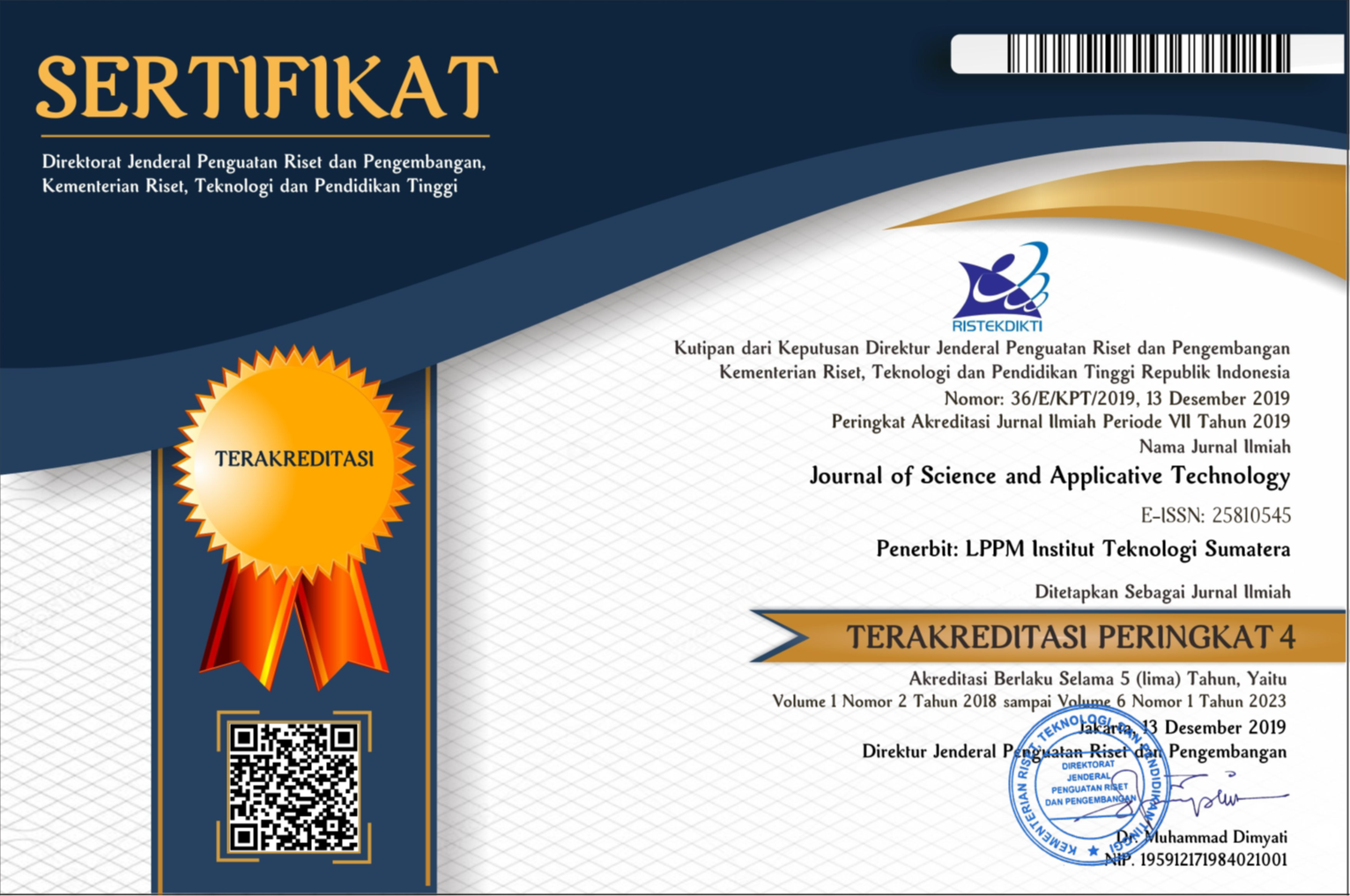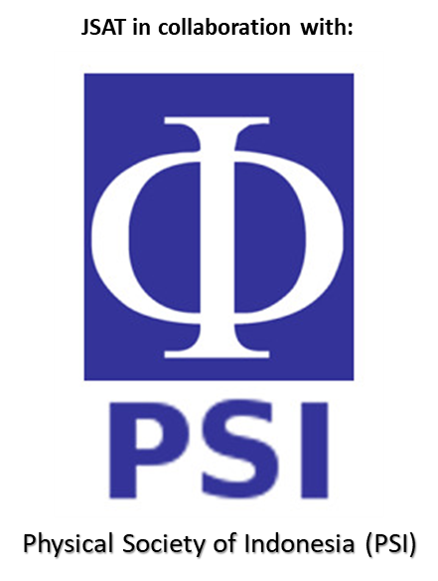Development of Submerged Biofilter Design for Wastewater Conservation: Carbonaceous Removal Study
Abstract
This stuy aims to determine the operational parameters of submerged biofilter and to develop a model that can be used to estimate the elimination rate of pollutant using aerob and anaerob reactors. The experiment was conducted with draining the wastewater on a cylindrical biofilter column. The removals of wastewater were processed with hidraulic loading rate (HLR) variation of 0.44; 0.74; 1.11; 1.66; 2.21 m3/m2/day. Samplings were performed at the various height of column, i.e. 0.15; 0.3; 0.45; 0.6; 0.75 and 0.9 m. Then the effluent from each point was analyzed using UV-Vis Spectrophotometer. The results showed that the optimum carbonaceous removal was obtained at column height of 90 cm. The operational parameters for scale-up application is 0.74 m3/m2/hour. While the removal percentage of carbon as a chemical oxigen demand (COD) parameter is 84.72%. The changes of HLR will give an effect on the substrate reduction rate (SRR), the microorganism’s growth rate, and the percentage of substrate removal. The model was developed based on efficiency factors can represent the concentration of COD effluent at the various of HLR and the height of column.
Downloads
All the content on Journal of Science and Applicative Technology (JSAT) may be used under the terms of the Creative Commons Attribution-NonCommercial 4.0 International License.
You are free to:
- Share - copy and redistribute the material in any medium or format
- Adapt - remix, transform, and build upon the material
Under the following terms:
- Attribution - You must give appropriate credit, provide a link to the license, and indicate if changes were made. You may do so in any reasonable manner, but not in any way that suggests the licensor endorses you or your use.
- NonCommercial - You may not use the material for commercial purposes.
- No additional restrictions - You may not apply legal terms or technological measures that legally restrict others from doing anything the license permits.





















